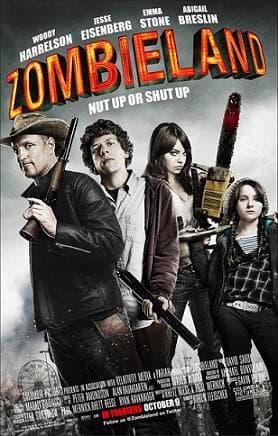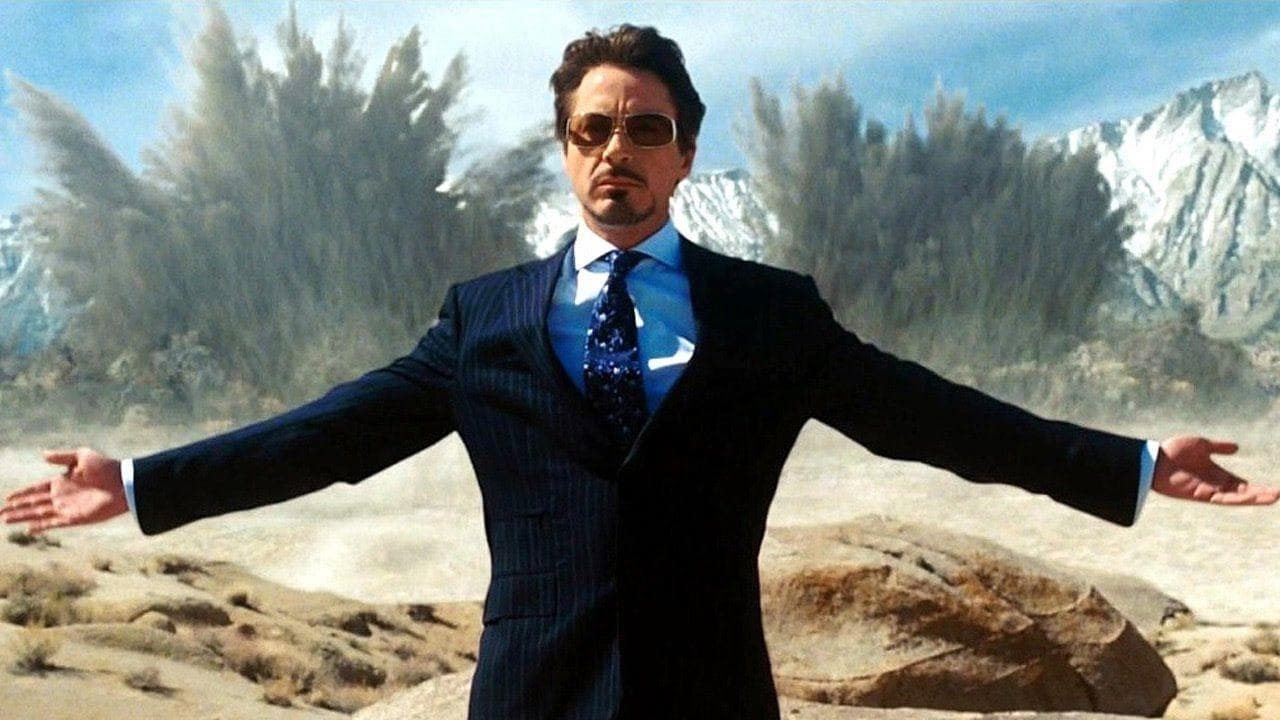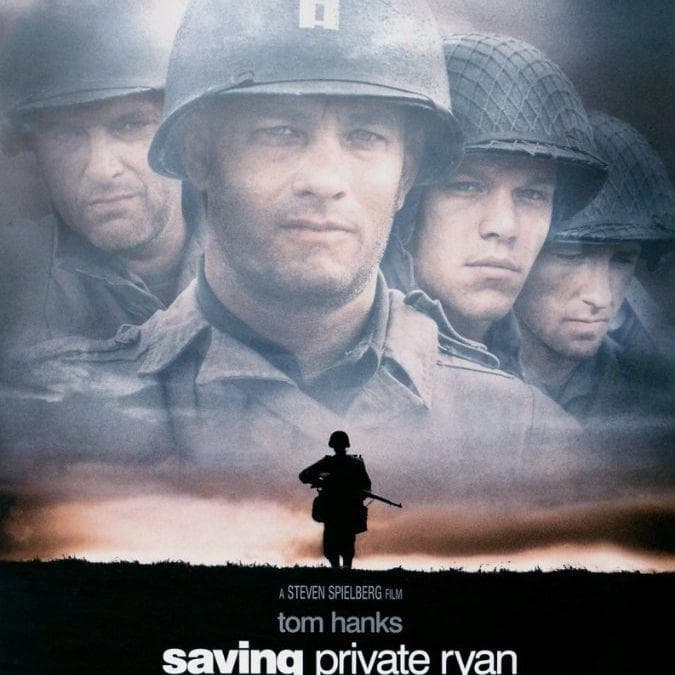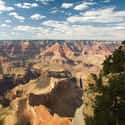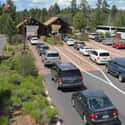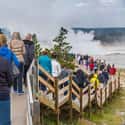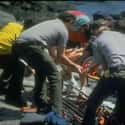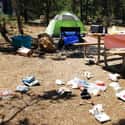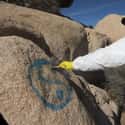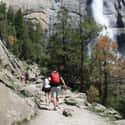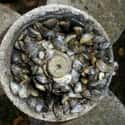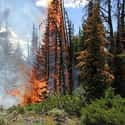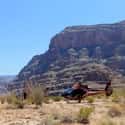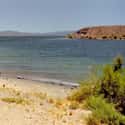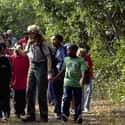-
(#1) The Popularity Of National Parks Are Surging And Attracting People From All Over The World
To put just how many people visit national parks into perspective, the combined parks saw around 305 million visitors in 2015, while all of the world's Disney parks combined had about 149 million visitors in 2014. Disneyland may be the happiest place on earth but apparently more people want to look at rocks and trees. Thanks to several successful campaigns in recent years, including a centennial anniversary in 2016, America's national parks are more popular than ever.
People wanting to reconnect with nature or experience the authentic natural beauty of the world account for many visitors, but many people travel from other countries to see America's national parks as well: 20% of tourists at Yosemite in 2010 were from areas outside the US. Although parks like Yellowstone, Grand Canyon, and Yosemite are the most well known, you may be surprised to discover that the Great Smokey Mountains actually draw the biggest crowds.
-
(#2) Cars Are Causing Traffic Jams And Polluting The Air
During the summer months and holidays, traffic within national parks can be just as bad as driving in a city. The amount of visitors each park gets every year can cause long travel delays, both getting into the park and traveling through it. Parking lots within the park are often full as well, making the natural wonder experience not so wonderful.
Some national parks, such as Glacier National Park in Montana, have adopted a shuttle service to take visitors around the park with stops at important areas and campgrounds. The air pollution from traffic overwhelmed Zion National Park in Utah years ago, and using the shuttle service to get around the park is now mandatory. Shuttles allow visitors a more relaxing experience, and can potentially eliminate people pulling over and blocking traffic to take pictures or causing an accident (the cause behind the majority of deaths in national parks) while distracted by a bison.
-
(#3) Crowds Are Congesting Trails And Trampling The Paths
More visitors to a park means more people out on the trails. While everyone deserves a chance to see the amazing vistas and plant life, too many people hiking at once can sometimes ruin the experience. And since not all people appreciate nature in the same way, not everyone is going to have a good time. Despite having to deal with park visitors taking selfies in front of every other tree or complaining about the lack of cell service, the trails themselves are hurting from all those feet.
"We're concerned about impacts on resources, vegetation, soils... and impacts to wildlife that frequent those areas," Mary Riddle of Glacier National Park commented. In addition to trails being overcrowded, there is danger to the environment if visitors go off the trail or park their cars in non-designated areas. However, it is true that the national parks were created in order for people to visit, walk around, and be enjoyed. As one park lover said, "What do we do, stop people from coming?"
-
(#4) Tourists Are Bothering Animals And Sometimes Endangering Their Own Lives
You are more likely to die in a national park due to a traffic accident or medical incident like a heart attack, and death due to an animal attack is rare. In Glacier National Park, for instance, only 10 people have been killed by bears since 1910 despite the fact 2 million potential victims visit each year. However when animals attack, the visitor is usually to blame after apparently forgetting they are not in a theme park.
Visitors have been gored by bison for getting too close and turning their back. A photographer pointed out the relative insanity of visitors approaching a bear and then chasing it when it ran away. Although many signs are posted in every national park reminding people not to approach wildlife, many people don't pay attention and end up injured. The animals suffer from human contact too, becoming accustomed to human food or acting overly aggressive when threatened.
-
(#5) People Underestimate Nature And Need To Be Rescued
Many emergency situations that happen in national parks are due to illness, such as heart attacks or heat stroke, but other times injuries or death occurs because people are careless. Emergency workers responded to 2,658 incidents in 2014 and had to spend between $4 to $5 million to help people who found themselves in trouble in national parks. Rescues are usually dangerous to the emergency workers as well, so keep that in mind when you're walking on slippery rocks next to a raging river.
In addition to ignoring warnings about animals and being attacked, hikers can become lost, fall off ledges when not paying attention (including into the Grand Canyon), or attempt physical feats they are not prepared for. Being safe should be obvious, but when people who've never rafted or backpacked before find themselves going over a waterfall or lost in a remote area with no map, people quickly realize how dangerous being unprepared can be.
-
(#6) Tourists Leave Their Trash On Trails And In Campsites
A 2010 report estimated that Acadia National Park in Maine spent $120,000 to remove trash from the park. Volunteers at Great Smoky Mountains National Park spent 3,410 hours picking up after visitors. Clearly, the people that travel to national parks across the country each year leave a lot of junk behind and removing this waste requires a lot of money and time. Keeping parks clean is an important part of preserving their beauty and many parks have taken extra measures to save their attraction, such as recycling programs and encouraging the use of refillable bottles.
Litter in national parks not only ruins the landscape but can also be hazardous to animals if they ingest the trash. Tim Jarell, head of maintenance at the Grand Canyon notes, "Deer have starved to death because of their stomachs being full of trash and condors have been x-rayed with coins and other trash in their stomachs."
-
(#7) Vandals Spray Graffiti And Destroy Landmarks
One would think the natural beauty of the national parks would be art enough, but there have been many cases of graffiti since the parks have been open, with artists often posting photos of their works to their social media accounts.
Gallery curator and graffiti supporter Jeremy Cross noted:
In the modern art climate, throwing graffiti up on a downtown wall is passé. Tagging a national park ups the ante. Of course, you're setting yourself up for a public stigma — and not a good one.
Casey Nocket (aka creepytings) who left her work in seven national parks has been banned for life. Her work included acrylic paint which is extremely difficult to remove without damaging rocks. Cleanup also isn't cheap and if the graffiti is too close to artifacts like petroglyphs, there is risk of even more damage to remove it. Some people ditch the paint and actually destroy natural monuments, like a group of teens in Oregon.
-
(#8) Visitors Take Pieces Of The Park Home With Them, Sometimes Animals
Many people realize trying to take a rattlesnake as a souvenir or loading a baby bison into an SUV is not the wisest decision, but somehow strange stories such as these happen every year in national parks. Visitors often think that taking one stick or rock as a souvenir won't hurt anything, but if all 305 million people who visited national parks in 2016 took an item, these protected areas wouldn't stay beautiful for very long.
Petrified Forest National Park in Arizona is slowly being depleted thanks to visitors seeking free souvenirs. At one point, it was noted 12 tons of petrified wood was disappearing into people's pockets and bags each year. It's important to remember that taking natural items out of national parks is considered illegal, and in many cases also comes with the threat of heavy fines.
-
(#9) People Wander Off Trails, Causing Damage Or Hurting Themselves
National parks offer miles and miles of pre-made trails throughout some of America's most breathtaking landscapes, but some visitors choose not to use them. Whether they're trying to create a unique experience for themselves or attempting to capture a photo of an elusive animal, visitors venturing off into the unknown is both damaging to the environment and dangerous to their safety. National parks set up trails in order to contain the impact on the environment and spend money and time keeping up trail maintenance. If every visitor to a national park decided to blaze their own trail, the damage to the environment the parks are set up to protect would be devastating.
In addition, many rescue operations in national parks come from people wandering off trails and getting lost or inured. Even experienced hikers can get lost or hurt and end up costing others money and time to find and rescue them. It's also important to remember signs and rules are put in place for a reason, and learn a lesson from the guy who crawled over a fence and was boiled alive in an acidic spring at Yellowstone.
-
(#10) Tourists Can Spread Disease And Introduce Invasive Species To Parks
Quagga and zebra mussels have slowly made their way across the United States thanks to hitching rides on boats and being transported to other bodies of water by fishermen and boaters. Most water vehicles, including those without motors like canoes and kayaks, must be cleaned and inspected before they're allowed into national parks. These rules are put in place to protect the ecosystem of each park, as outside animals, plants, and insects can cause harm.
Unfortunately, it isn't always easy. Visitors can carry invasive seeds into parks via their clothing, cars, or pets. Sometimes seeds are stuck in mud attached to wheels or boots. Many parks also restrict visitors from bringing their own firewood since it may be carrying invasive insects like gypsy moths or diseases such as Emerald ash borer.
-
(#11) They Start Fires Which Can End Up Destroying Millions Of Acres
While many wildfires are ignited by lightning, many more are started by careless humans. Discarded cigarette butts and unattended campfires have been seen as the cause for almost 90% of the wildfires started in the United States, many of which have affected national parks. In 1988, 50 of the 248 fires near Yellowstone were inside the park, causing damage to 36% of the park and costing $120 million to put out.
In addition to destroying the landscape, fires in national parks can endanger the lives of both animals and humans. Fire is also something that can be easily avoided when proper care is taken by smokers and around campfires. Jail time and hefty fines are also great reminders to be careful with flames.
-
(#12) Sightseeing Planes And Helicopters Create Air And Noise Pollution From Above
Several companies have set up business close to national parks, offering sightseeing tours via airplane or helicopter. They offer the ability to see amazing sights, such as the Grand Canyon, from a different viewpoint and without bumping shoulders with other visitors. While tours from above do help cut down on the amount of vehicles and selfie-takers throughout the national parks, traffic from above can also cause noise pollution and may slowly make noise in these preserved areas more comparable to urban areas.
However Dan Haynes who runs a helicopter tour organization above Great Smoky Mountains National Park points out:
As for the impact of air tours over the parks, I believe [they have] the least negative impact [on] the environment – but the worst perceived impact by those enjoying the parks from the ground...They leave no footprints, no trash and offer many people a fantastic view...In short, we are not around long and we leave no trace.
If you're traveling to Yosemite, leave your drones at home. They are banned from the park for causing noise pollution affecting both visitors and animals, and may impede with emergency rescue operations.
-
(#13) Crime In National Parks Is Rising
According to a 2005 report by the Public Employees for Environmental Responsibility, it was more dangerous to be a national park ranger trained in law enforcement than a FBI agent. Although rangers have many more dealings with the public than members of the FBI, crime rates inside national parks are growing. "We've had rapes, we've had murders in the park, we've had bodies dumped in the park," said a chief ranger at Lake Mead National Recreation Area near Las Vegas.
Fewer park rangers and more visitors each year is part of the problem, and most crimes committed in national parks have drugs or alcohol to blame. Parks near America's borders also have to contend with drug smuggling and illegal immigration. But mostly the problem comes from visitors bringing society's troubles along with them. "We're suffering from the same societal problems that most urban areas are," a park service spokesman commented.
-
(#14) There Aren't Enough Funds Or Park Rangers To Keep Up With Demands
As the number of visitors to national parks swells each year, it becomes apparent the parks do not have the funding to keep with the needs of the crowds. Leaky buildings, structures built with hazardous materials, and deteriorating roads are just some of the problems facing the parks, and after they announced the delay of about $11.5 billion worth of maintenance projects in 2015, things probably aren't going to be upgraded or fixed any time soon.
The people employed by the national parks are in trouble too. Budget cuts have led to understaffed parks, including rangers (who take on many more jobs than just giving tours) and emergency rescue workers who save both hikers and animals.
CEO and President of National Parks Conservation Association, Theresa Pierno said:
Superintendents operate parks on shoestring budgets and can't afford to fill open positions, leaving current staff to work long hours and perform the jobs of multiple people. The same park ranger greeting visitors may also need to lead a tour, fix a display and clean a bathroom because there is simply no one else to do it.
-
(#15) Donald Trump Wants To Privatize National Parks, Possibly Destroying Them
One of President Donald Trump's goals in office is to privatize some of America's national parks. This would mean eliminating their federal protection and leaving them open to potentially destructive organizations like mining companies. Trump also proposed budget cuts to the Department of the Interior under which the national park system operates.
However, he seems to be going about his ideas with conflicting actions. In what some people claimed to be a publicity stunt, Trump voluntarily donated his salary for his first 10 weeks in office to the parks service. But then he lifted a nation-wide ban on plastic water bottles in parks that was set up in 2011 to help the environment. What will eventually happen to America's national parks is anyone's guess.
New Random Displays Display All By Ranking
About This Tool
In recent years, the number of tourists to American national parks has surged. However, incidents of tourists failing to comply with the rules and being injured by animals have also increased significantly, causing concerns among management agencies and environmental protection organizations. Many tourists approach wild animals without authorization, causing their own casualties, or injuring animals. For example, a Canadian tourist once drove away a small bison, causing the bison herd to no longer accept the small bison, and the staff had to euthanize the small bison.
More tourist violations have increased the workload of the park staff and are gradually destroying the ecological environment of the national parks. In some extreme cases, tourists even died. You could find 15 descriptions of terrible tourist behaviors with the generator.
Our data comes from Ranker, If you want to participate in the ranking of items displayed on this page, please click here.


